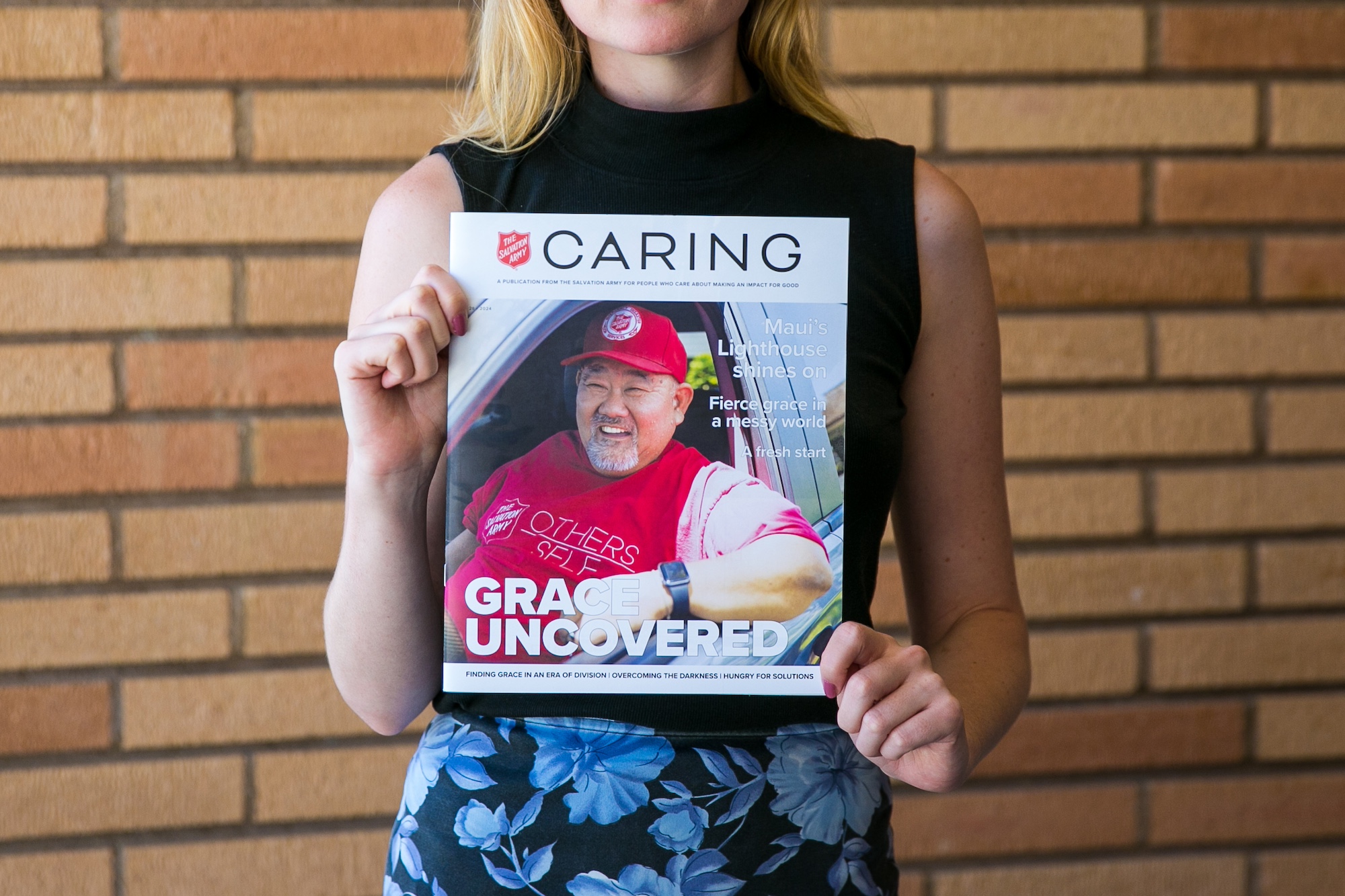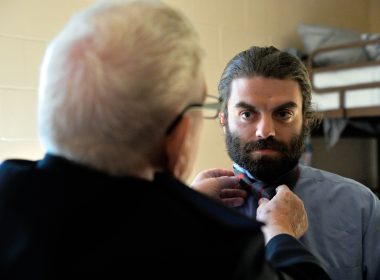What Army Soldiers Are Talking About
During the recent MISSION2000–Terloc conference, six committees reflecting divergent aspects of Salvation Army ministry and mission were charged with evaluating the Army’s present condition and brainstorming projections for potential change. The following are brief synopses of committee observations resulting from their day-long meetings.
Spiritual Life
The committee expressed concern that many Salvationists have not attained their spiritual potential. Contributing factors are: a lack of theological understanding, weakness in fervency of prayer, Biblical illiteracy, lack of personal responsibility for spiritual formation, inadequate discipling, and giving the appearance of being anti-sacramental (as opposed to non-sacramental). While we do evangelistic efforts/programs, we are no longer evangelists. In addition, the corps review system emphasizes statistics and budget more than the corps’ spiritual life and health.
Projections include: each Salvationist practicing spiritual disciplines and taking personal responsibility for spiritual formation as well as developing personal growth plans with an accountability component, utilizing different worship styles, increasing small groups–Bible study and cell groups–revising corps review to reflect the “health” of the corps spiritually, fiscally and numerically.
Other concerns include the need to break down institutional communication barriers, seriously studying team ministries, obtaining feedback from corps councils relating to officer moves, desiring quality of cadets as opposed to quantity, and revising CFOT curriculum to be compatible with today’s worship style and culture.
Personnel
The changing climate of society and the Army continues to impact officers and soldiers throughout the West. More officers are resigning than in past years and some of this is attributable to higher personnel standards. Officer success is often viewed in terms of administrative promotions, with servant leadership not emphasized. However, the auxiliary captain program continues to grow, bringing in officers who are making a significant contribution.
Increased cooperation between corps officers and local leaders (who provide corps continuity) is needed, as well as input from key local leaders and advisory board members in evaluating officers. Also, interviews with soldiers can assist in evaluating a corps officer’s success.
The role of an officer is not an easy one. It’s suggested that efforts be made to make former officers feel at home within The Salvation Army, showing them that they are still valued and that there is still a place for them in the Army.
Cadets should be considered after a minimum of one year corps leadership experience, two years of college and competency in language and math skills, and with an observation of their ministering “in the field” instead of an interview at a DHQ setting.
In addition, there must be a philosophical shift towards “servanthood” for all officers, an increased appreciation for the role of corps officer, and administrative positions to last for only five to seven years.
Quality of life, both personal and family, could be enhanced through: assignments to conferences such as Brengle or ICO given not to one but both marriage partners; providing marriage enrichment workshops every three years; requiring parenting classes for all officer parents.
Corps Development
A need exists to reevaluate the corps planting guidelines and process relative to: self-sufficiency and subsidization, financial base, designation as corps, specialized training for personnel opening new corps, the impact of new corps on surrounding corps and corps districts, and the degree to which the profile of the corps and the planter/leader are accurately matched.
In addition, more support is often needed from the “mother” corps, with the proposed corps planter/leader under the mother corps for about six months to build relationships within the congregation before asking a group to leave the “nest,” and ensuring the mother corps is healthy before it “delivers” a new corps.
Clarification is needed for support issues for new corps including: timeline for self-sufficiency (three years is not long enough for some), the financial base for a new corps (grants for contemporary vs. community-supported programs for conventional corps), specific guidelines for opening new corps (along with extended specialized training for personnel opening new corps).
Resolution for the following was suggested: a stronger emphasis on fulfilling the Army’s mission statement rather than being driven by numbers, dollars and/or traditions, leaving officers in appointments longer to create healthy congregations, and applying resources of DHQ not only to programs but to personnel, as there are officers (particularly young officers, a/captains and corps leaders) who desperately need help in their personal and administrative skills.
Youth
Youth programming and corps relations continue to be a vital part of the Army’s ministry to young people. The committee indicated that young adults (ages 18-30) need to be more involved in present and future planning and decision making, that youth ministry and programs need to be based on cultural diversity, and that youth programs need to be consistent with trained leadership.
To build the Army’s ministry to youth, it was felt every corps should have a youth worker educated and/or trained, with a proper job description; there should be short and long-term mission opportunities, both inner-city and overseas; development of basic evangelism programs; a scholarship program that would provide training for youth who want to work with the Army but in the role of a youth pastor, business administrator, etc., not in the role of officer; establishment of more Good News Clubs (ages 6-12) and Salvation Army sponsored sport programs for youth through young adults.
Other issues include: emphasis on statistics versus quality of corps programming, closer matches of officers with soldiery and programs (and longer tenure at corps), promoting a more balanced focus on Life Service with equal emphasis placed on local leadership, career ministry opportunities and officership.
Questions related to: when a response will be made to the sacraments issue, what can be done to establish open two-way communication between the corps and DHQ/THQ; will consideration be given to an administrative track and pastoral track in officership; and the ministry opportunities (short term, long term, and career) available for young adults.
Mission and Identity
Defining the Army’s identity and mission in a changing world brings unique challenges. Forty years ago, the Army had a strong presence in communities, with more officers than employees. Today, there are 20 employees for every officer, and officers have become managers. Along the way, it has become the number one charity, and the best organized one.
In relation to mainline Christianity, the Army wants other denominations to recognize us as those who spearhead and organize social services efforts in the name of Christ. While people admire The Salvation Army for its services, some have no idea it is a church. The Army’s non-sacramental stance keeps it from being recognized by other denominations as a church. This is initially a hindrance, but over time and teaching is not the deciding factor in keeping converts. For example, in Colorado Springs, Colo., where the National Seminar on Evangelism is held at Glen Eyrie, some people don’t see The Salvation Army as a church, and cannot accept its non-sacramental stance–they prefer to go back to the church they grew up in or which their family attends. Unfortunately, the Army’s message to the world is that it doesn’t believe in baptism or the Lord’s Supper, rather than it simply doesn’t practice those sacraments.
In relation to identity, the Army must determine if it is a church, social service agency, or a movement. The development of new kinds of corps is seen as divisive–birthing from existing corps works better.
Worship
Exploring the nature of corporate and individual worship, the committee affirmed the need for officers and soldiers to be faithful in developing their own sense of worship. In examining worship within the corps, issues include: is it wholehearted or overly predictable; is it similar to a concert, in which people watch the professionals do the worship, or does the corps regularly encounter the Lord.
Areas of concern include being careful that programs and activities are not getting more attention than the Lord, making worship relevant to daily living, and the need for officers (worship leaders) to model, emphasize, and participate in worship so that the congregation will do likewise.
Keys to rebirth in worship included the reality that a corps will always be a reflection of its officer–if the officer is not a worshiper, it is unlikely the corps will be a worshiping corps, that a worshiper is one who worships as a lifestyle, not only on Sundays, and that revitalized hearts are a key to keeping worship passionate. Also, encouragement and more opportunity for prayer, fasting and preaching on subjects that increase hunger for God need to be given. Care must also be given that the band, Songsters, worship bands, and soloists don’t hinder congregational worship by bringing attention to themselves.
A sense of community is a vital part of worship–corps undergoing renewal are discovering the corps as a community. We don’t worship in a vacuum. People need to feel close to each other and one with each other for the atmosphere to be conductive to worship renewal.











